It has been a long dream for me to photograph and to have good looks at the “Great Indian Bustard”. I saw this great bird in Ranibennur almost 15 years back and was in love with that bird ever since. I did not have a decent camera those days and the digital world had not conquered the analog, so the dream was still a dream till last weekend. The Great India Bustard is a critically endangered species, where it is known that only some 350 birds are left to survive in the wilds of India. I planned a trip with my close camera buddy Niranjan Sant (from Belgaum) and headed to Nannaj (Great Indian Bustard Sanctuary). From Bangalore I took a bus to Belgaum and there Niranjan picked me up and we drove to Solapur/Nannaj. We were very warmly greeted on our arrival at the Nannaj Forest Guest House by the forest department staff. The arrangements here were taken care of due to the support/help of our dear friend in Pune Mr. Raja Purohit, who himself is an ace wildlife photographer.
Nannaj is a small town located around 20kms from the main city of Solapur (in the State of Maharashtra, India). One will feel that there are places in our wonderful country that even look like African wilderness in this place. You can get more details on Nannaj from www.wikipedia.com. Solapur can be reached by train or bus from most metros like Mumbai and Bangalore. From Solapur one can reach Nannaj by Taxi or Auto Rickshaw. The place is very simple and the aroma of village India still exists there. For me living in a concrete jungle like Bangalore, any opportunity to travel to the wilds of India or to the basic life of rural India, brings great joy and satisfaction to my being.
Rains are only an infrequent visitor to this region and this region of Maharashtra remains a dry zone through out the year. The vast expanse of grass lands and thorn bush country makes the perfect haven for the Great Indian Bustard, Black Buck, Indian Wolf and the many grass land avifauna and mammals. With the help of Mr. Bhagwat (Wildlife watcher – Forest Department of Nannaj) we headed to the protected zone of the Great Indian Bustard Sanctuary. There is a watch tower situated right in the middle of this protected area where tourists, birders, photographers and naturalists are only allowed to watch the wildlife from the watch tower. It’s a great practice that no one is allowed to walk or move about in the protected zone, which may cause disturbance. When we were walking towards the watch tower, we were greeted by the flight of a couple of Great Indian Bustards (females). We made some flight shots immediately and it was not a bad start to our trip at all. From the watch tower we observed around 300 or more female Blackbucks and around 10 male bucks. Most adult females were pregnant and were carrying this year’s babies. The whole group was divided in to smaller groups by the dominating males and was well guarded by them. There was intense battle going on between the territorial males for the rights to mate. We waited at the watch tower for an hour but there were not many wild life movements towards us so we left the area and jumped in to the car and hit the roads on the periphery of the sanctuary.
The scrub land around produced scores of Larks, Silverbills, Collared Doves, Red-Turtle Doves, many Indian Coursers in breeding plumage and some with young and also Chestnut Bellied Sand-grouses. When we climbed a small sandy hillock out there, we found a few Indian Coursers having chicks. As the sun was setting fast, we pitched in our photo gear and started to photograph these amazing little ground birds. As we were observing these birds, I witnessed one particular behavior of the chicks that I would love to mention here – when ever they wanted to be fed, they use to go behind their parents and pull their tail feather with their beak and immediately the parents ran around collected a grub or two and fed them. We saw this behavior many times out there. In the near by sandy hump which was around 2 kms away from where we photographed the Coursers, we observed through the binocular 2 pups and 3 adult Indian Wolves. It was an amazing site to see these endangered mammals, which have survived the onslaught of man for many years now. It was a very satisfying afternoon of birding and photography and after the sunset we returned to camp. Very close to the camp on the forest department office roof top a Eurasian Eagle owl was seen perched and was looking spectacular. Mr. Gaikwad who is the hospitality in charge greeted us with some tea and namkeens (snacks) and we settled down for dinner.
We informed Mr. Bhagwat (wildlife watcher) to come over early the next morning, so that we can hit the road and try our luck in photographing the wildlife in that region. When sun arrived on the grasslands we were lucky to photograph a Southern Grey Shrike which is a bit elusive/shy bird. Also the Red-winged Bush Larks were singing and allowing us some closer looks, there were many Black Bucks also grazing in the morning sun and we did get some shots as well. During the drive around we spotted a lone Chameleon crossing the road, to my surprise he was almost 2 feet in length and the biggest that I have seen till now. Large Grey Babblers were every where digging the earth for grubs and any edible available was gobbled with ease. Mr. Bhagwat informed us of a gorge close by where we can see the Eurasian Eagle Owl and visited that place too. Near to this gorge we found a group of bachelor Blackbuck males which again gave us some photo opportunity. As the Sun was climbing high and was not favorable for photography we headed back to camp where lunch was ready and we rested for few hours to regain back our energy post lunch.
We decided to spend the afternoon at the watch tower to try our luck with the Bustards. When we arrived there, we did find around 4 adult male Great Indian Bustards at the horizon doing their usual duty which is picking up grubs and edibles from the grass land. Their peace was disturbed by 2 domestic (feral) dogs which ventured in to the protected area and started to chase everything at sight. They chased the Blackbucks for some time and then the Bustards, which made the birds to fly to a far off location. We just wanted to try our luck by driving in the direction where the birds landed which was outside the protected area and we did see them again at a private farm standing under the cover of thick thorn bush. They were against the light for photography so we could only get few record shot of them. That area was again abuzz with lots grassland birds and we did get some photographs of Collared Doves, Red Turtle doves, Indian Coursers etc. When we were returning to the camp that evening we found a Black Naped Hare and our attempts to get a picture failed miserably due to bad light.
As the morning came by the next day, it was time for us to leave Nannaj and head home. We decided to bird for around 3 hours till 10AM, so we headed towards the protected area and found none of the Bustards, so we hit the road and we were very lucky to find a Black Naped Hare sitting near a bush very close to our car. We clicked away to glory as this was the only opportunity that I have had in these many years of my photography life. Even though the Black Naped Hare are found everywhere, they are very shy and seldom show up in the open. We thought that this will stand out as the “photograph of the trip”. We also explored few grassland areas away from the protected sanctuary area and found none of the bustards, but did photograph some Grey Francolins, Sand Grouses, Lapwings and Larks. And thus ended this trip to Nannaj.
To tell the truth the future of this Sanctuary looks very bleak. There are too many private farms too close to the protected area. Some real estate firms have already pitched in their boards which say “residential sites for sale”. The protected area is very small to support the birds and mammals that it is home to. When the food plants & insect life are finished within the protected area by the black bucks & other wildlife, they venture outside the sanctuary where threats can come in various forms. They immediately start competing with cattle owners and Shepherds, this causes competition and unhealthy competitions can have tragic effect on wildlife. Domestic animals can spread diseases to the wildlife. The feral dogs that are often seen in the protected zone can be of great threat to Blackbuck young. It has been always noticed in other wildlife parks in India that once the feral dogs taste blood, they always remain in the area and attack the hapless wildlife. These need to be eliminated immediately in the interest of the Blackbucks and Bustards.
The forest department present there is knowledgeable and dedicated, they need to be supported with more manpower, better equipment to engage them totally in to a well organized team for biodiversity conservation. The protected zone should be increased soon; government should promote eco-tourism which will generate funds which in turn can be diverted towards protecting the area. The ever growing population in India is putting a lot of pressure on our wildlife. Unless a valiant effort is done to protect this area, it is imminent that very soon this place will be only a thing of the past, with no more Blackbucks or Bustards to grace the landscape.




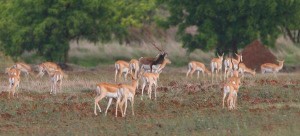





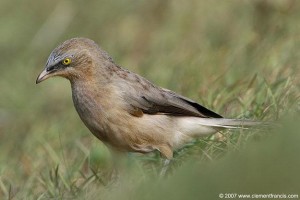
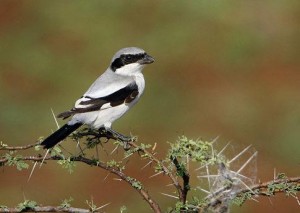

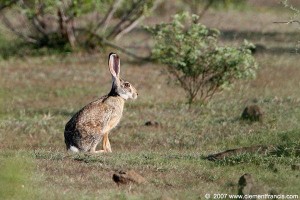
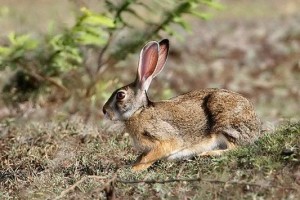
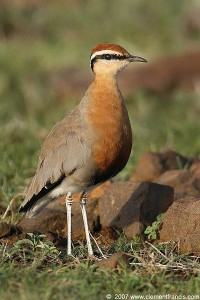
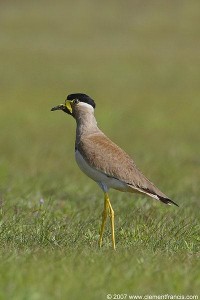

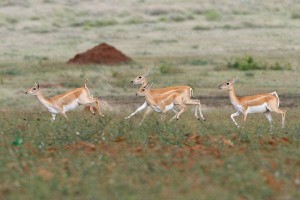
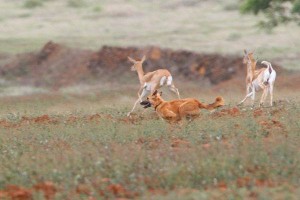
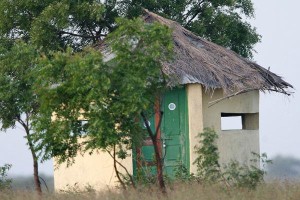
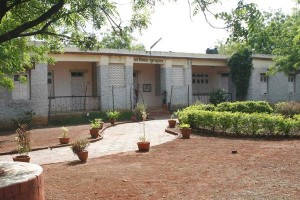
One Response
Ajay Jandial
Clement sir,
Thoroughly enjoyed your style of narration and the images.
I agree with your line “there are places in our wonderful country that even look like African wilderness….”
I would also like to acknowledge here that I have taken to bird photography after observing images posted by stalwarts lie you on India Nature Watch.
Regards and best wishes.
Ajay Jandial